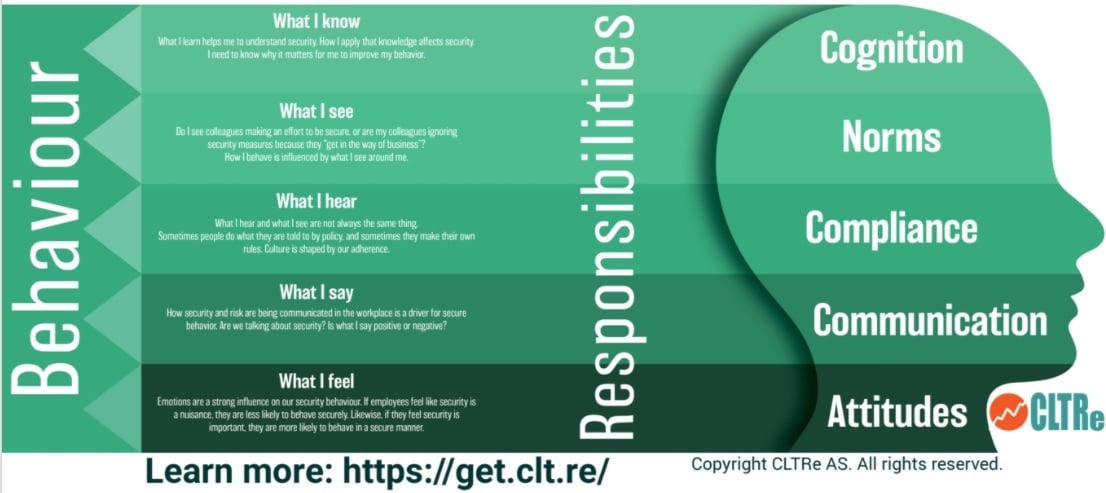Workplace Culture and Conflict
Cultural conflict in the workplace is never ideal. Cultural conflict in the workplace is divisive and leads to a significant drop in productivity. It also has a way of playing with the psyche and morale of staff. Managing such conflicts leads to a more harmonious workplace and, more often than not, garnering more creative ideas through multiculturalism.
Most companies are currently adopting having a diverse team. Having a diverse team to a large extent guarantees long-term success in managing cultural conflict. Besides common sense, scientific studies have also revealed the fact that people with distinctive points of view and personalities increases the creativity of a team in solving their tasks. This is an honest assumption if we consider that every team member is pulling in the same direction.
A Harvard Business School Assistant Professor Roy Y. J. Chua started to think about the impact of various cultures when working on a case study about a Chinese luxury apparel company. He observed that there were so many cases of unresolved conflicts among people from different cultures. These unresolved conflicts resulted in miscommunication and tension between these sets of individuals. The most fascinating observation he made was that to these individuals, they had no problems and they get along just fine. They could not even identify their bias when asked.
One of the findings in his previous studies led to a comparison between these cultural problems and discrimination in hostile work environments. His findings from his previous study showed that sexual harassment or racial discrimination was the underlying conflicts that might arise. He observed that in situations where the aforementioned events happened, there was a significant performance and morale drop by co-workers even when they were not the direct targets of the aforementioned abuses. He referred to this as the ‘indirect conflict’ and it happens more often than companies think without them having the slightest knowledge that it exists. For instance, kids who witness regular fights between their parents are more likely to be skeptical of the idea of marriage. Another example can be observed between citizens of the United States of America and citizens of Mexico who tend to have a growing hatred for each other. This brewing hatred is largely a result of political tension between the political elite of both countries. If this can happen to society, it can also replicate in the workplace isn’t it possible that it could happen in the workplace?
We all have a tendency to take our beliefs and thinking subconsciously into the workplace. We are humans, and human nature is all about understanding situations and reacting appropriately. Sometimes when we don’t understand things fully, we tend to just react emotionally instead of rationally and when individuals within an organization do not understand certain processes and start reacting emotionally instead of rationally, a certain pattern is created and this pattern can lead to conflicts as emotions are involved.
Some of these emotional reactions might have serious consequences that might threaten organizational safety and security. Research by security experts affirms this school of thought and one of such security experts is Steven Millwee, CPP, president, and CEO for background screening and investigations firm SecurTest, Inc.
According to Millwee, there are several behaviors in organizations that make the work environment a toxic environment. This toxic behavior can be a motivational factor for sheer vices such as destruction of official property, theft of intellectual property, theft, and other forms of abusive behavior such as bullying and more.
For example, working with a toxic boss can trigger lots of negative reactions from staff as this can lead to the feeling of depression, isolation, worthlessness and can reduce employees’ self-esteem. You feel isolated, no one listens to you, no one cares about you, your management team is totally disengaged from you," he adds. "This oppressive type of atmosphere motivates a person to not do their job—or just do the bare minimum of the job—or it creates a catalyst for the employee to act out because they feel they need to take some action, albeit inappropriate action. This to a large extent leads to such staff planning a revenge mission against the organization, while this does not promote or justify this behavior in any way, it simply aims to show the factor responsible for such behavior.
Why it is important to Understand cultural Differences
When managing a diverse team, it is important to understand cultural differences. Understanding the cultural background of your employees can go a long way in giving you insights into what can be responsible for certain habits and behaviors they exhibit at work. Understanding this concept arms you with better insights into the best ways to motivate such staff and also the best ways to mediate in conflicts. It also gives the employee a sense of belonging especially seeing someone who understands them better and is supportive of their culture. This creates a better work environment and leads to more productivity and efficiency at work. This creates a culture of mutual respect and tolerance at the workplace.
Types of cultural differences in the workplace
Cultural differences at the workplace consists of lots of factors such as individual upbringing, community and history. There are lots of characteristics that leads to cultural differences in the workplace. A diverse organization consists of individuals from different economic backgrounds, age brackets, gender, religions and much more. Below are some factors responsible for cultural differences.
Ethnicity: One’s ethnicity has a significant impact on his behavior at the workplace. While some cultures are more outspoken and direct, some others are more reserved and follow a chain of command. Some cultures are more confrontational in their approach while others are less confrontational.
Religion: Religion can also influence people’s behavior at the workplace. It is very important to put in place policies that respect the religious affiliation of everyone at the workplace. People have the right to express their religion. Some actions might be perceived by some staff as being against their religious belief, it is important to accept this and make room for more accommodating policies.
Education: Education is also another factor that affects individual behavior within an organization One’s level of educational exposure have the capacity to affect how they fit into the workplace. Educational background to a large extent dictates how individuals solve certain problems and approach certain situations. Having individuals with a diverse educational background working on the same project would have diverse solutions to the project.
Generational: Most times people tend to overlook this. Culture. To be honest this is very evident in most organizations. You have the millennials and then you have everyone else.
Examples of how cultural differences impact the workplace
Each cause of cultural differences in the workplace can manifest in several ways depending on the environment and the unique backgrounds of your team members. Some of the most common examples of cultural differences in the workplace are:
Dress code
Culture and generation often impact how people dress. For example, many Sikh men wear a turban as part of their religious commitment. Dress code restrictions on headwear can infringe on their right to religious expression in most circumstances. Another instance of cultural differences in dress code is younger generations who value personal expression dressing more casually at work than older generations who value conformity and traditional professional dress.
Feedback
Different cultures have their own expectations about giving and receiving feedback in the workplace. For example, in China it is uncommon to criticize workplace superiors in any way. Someone who moved from China to the U.S. may be less vocal in group conversations because they expect to be called on by a manager before they share their ideas.
Communication
People from different backgrounds communicate differently depending on how they were raised. For example, people with European backgrounds tend to expect high levels of eye contact and directly say what they mean in conversations. They can be more comfortable rejecting requests and saying no. People from Native American cultures, on the other hand, can see direct eye contact as intimidating or disrespectful and use indirect communication to be polite, making suggestions instead of demands.
Teamwork
Employee ideas about teamwork and individualism can also show up in the workplace. Some people were raised to be independent and problem-solve on their own, while others rely on teamwork and community to be successful. For example, Gen X and Gen Z are both characterized by being more independent, while Millennials and Baby Boomers are more team-oriented.
Strategies for approaching cultural differences
Once you can recognize cultural differences, you can take steps to be proactive about managing their impact. Try these tips to create a culturally affirming workplace where people of different backgrounds can work together successfully:
Learn about your employees
While maintaining respectful boundaries, learn about the unique experiences that each of your employees brings to the workplace. Understanding the background of everyone on your team allows you to research their cultural norms and prepare to accommodate them.
Host diversity training
Requiring employees to attend diversity training can create a more understanding environment and equip employees with the strategies they need to work with people who have different cultural norms.
Acknowledge holidays and celebrations
Avoid assuming that all employees celebrate the same religious and national holidays. Celebrate cultural holidays equitably to make sure your team knows that you respect their beliefs equally.
How cultural differences affect professional interactions
Different people from different cultures use different communication styles. You may be the type of person who gets right to the point. However, your colleague might take a more circular approach, taking longer to say what needs to be said. A well-known book (The Culture Map by Erin Meyer) is now used by many companies in teaching their employees to navigate the different cultural approaches within multinational organizations. There are many factors that contribute to cultural differences at work: ethnic or racial background, gender bias, age, and educational background.
You’ll even find the simplest of tasks are carried out differently across the world. Take, for example, something simple like getting the coffee. In some cultures, this is perceived as what the most junior person in the office does; in others, the manager is happy to pick up a coffee order for the whole team.
Direct and non-direct communication in the workplace
A common cause of friction in an international workplace is the style of communicating. You’ve probably heard that the Dutch are extremely direct in general; whether it’s a personal comment (“I don’t like your new hairstyle”) or in business (“If this project continues, we won’t make our targets”), you’ll know straightaway what is meant. On the flip side, the Japanese tend to be very indirect with their business communication. You’ll ask a co-worker a question and then find they disappear off to consult with a colleague before giving a definitive answer.
Confused? Don’t be. If you’re traveling abroad to visit clients, be perceptive towards new hand gestures, unfamiliar expressions, and different conversational styles. Watch, listen, and observe carefully. A friendly hand gesture in your own country might not mean the same in your host country. And even if you don’t like doing something in a way which is unfamiliar to you, give it a go; people will respect you for at least trying to understand the finer details of their culture. Regardless of what your type of communication is in the workplace, keep an open mind and understand that other ways can work too. You don’t have to change your culture but try and find common ground in which everyone understands each other and can embrace the differences.
By Douglas Ruhl
VP of Business Development
Strategic Security Corp
Tags: #protest, #emergencyresponse, #contract, #emergency, #guards, #services, #activeshooter, #ai, workplace



